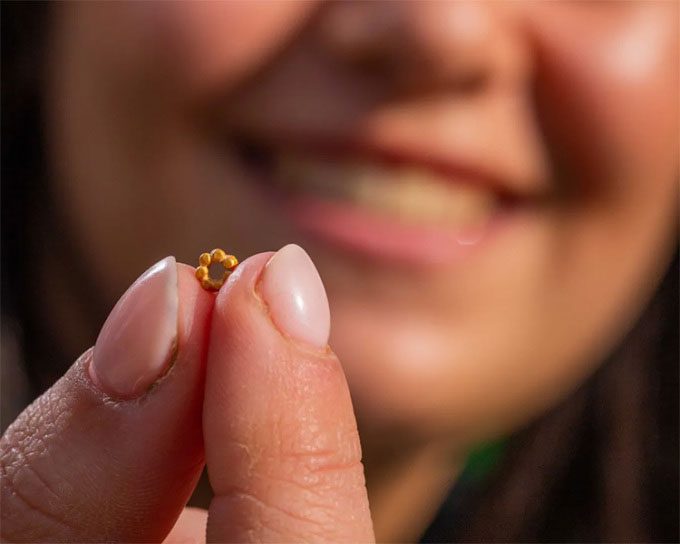An exquisitely crafted Roman-era bead necklace featuring small gold beads intricately attached to form a flower-like shape.
18-year-old volunteer Hallel Feidman discovered this unique Roman-era bead necklace while sifting through soil excavated from the Pilgrimage Route site in Jerusalem, as reported by IFL Science on February 8.

Hallel Feidman holding the tiny pure gold bead necklace. (Photo: Koby Harati)
The necklace is made of pure gold and dates back at least 1,600 years. This artifact displays remarkable craftsmanship, with individual small gold beads meticulously linked together to create a floral design.
Experts rarely find gold items during excavations in this area, and a necklace with such intricate design is even rarer. Similar bead necklaces have been found near the City of David in Jerusalem, but they were all made of silver.
“Throughout my years in archaeology, I may have found gold only once or twice. Discovering gold jewelry is extremely special,” Dr. Amir Golani from the Israel Antiquities Authority described the rarity of this new find.
“The most fascinating aspect of the necklace is its complex and unique production method. A deep understanding of materials, their properties, and temperature control is essential. Only a professional craftsman could create such a necklace. This is one of the reasons why this find holds great value,” Golani added.
The necklace may have originally been a small part of a larger piece of jewelry, such as a necklace or bracelet. Such an item would likely belong to a wealthy individual with substantial means, according to Golani. In fact, the remnants of the site where the beads were found were once a grand architectural structure, with intricate mosaics on the floor showcasing the wealth of its inhabitants.
Experts believe that the technique for creating these beads originated in Mesopotamia. Subsequently, this jewelry could have arrived in Jerusalem through trade or it might have been a family heirloom passed down through generations.
“Even with today’s advanced technology, creating something like this remains very complex. Upon examining the necklace closely, one cannot help but deeply admire the skill and talent of those who lived centuries before us,” Eli Escusido, Director of the Israel Antiquities Authority, remarked.


















































